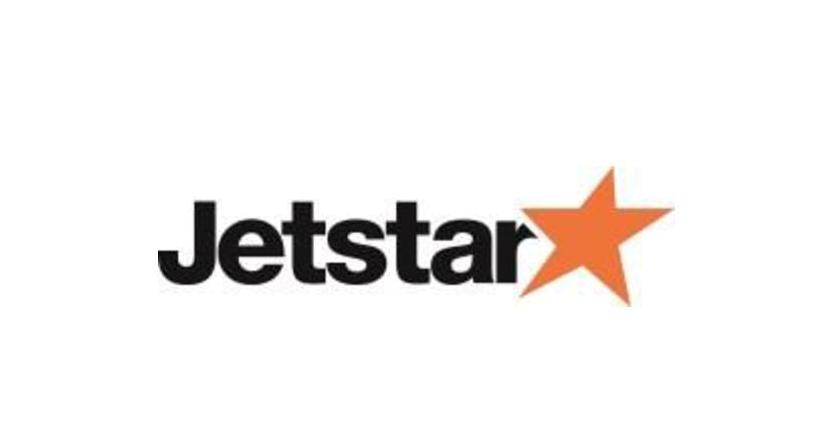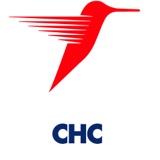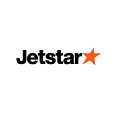Title Page
-
Prepared by
-
Port
-
Date
-
Flight Number
-
Aircraft Registration
Arrival
-
OM15B 1.15, 1.15.1 Communication during emergencies
-
"Are communications systems between ground crew/customer service and engineering in place & used effectively?<br>
-
Is a communications headset utilised for aircraft receipt communications and remains fitted at all times when the aircraft is occupied (operating crew/passengers)" <br>
-
OM15B 2.1 Accountabilities 2.6.5 Roles & Responsibilities
-
Are sufficient resources allocated to the applicable flight/s, this includes ensuring that a leading hand, loader operator is allocated
-
OM15B 1.7 FOD 2.6.6.1 Aircraft Receipt
-
Has an FOD inspection been made of the bay/gate? Is all aircraft receipt equipment available and serviceable for use: <br>1. Chocks <br>2. Head set and communication lead <br>3. Warning Cones
-
OM15B 2.16.6.1 Aerobridge Positioning
-
Is the Aerobridge in the home position prior to use, is the roller door or safety gate secured?
-
OM15B 2.3 Bay Preparation and GSE 2.4 GSE Staging Areas 2.5 GSE Storage Areas 2.6.6.1 Aircraft Receipt
-
Is all GSE for the turnaround prepared and parked behind storage/staging line markings, this includes ULD stowed on the bay for use? Nose wheel chocks may be positioned on the applicable stop line 1 M from the centre line
-
OM15B 2.6.6.1 Aircraft Receipt 2.7.3.1 Aircraft Marshalling
-
Was receipt of the aircraft in accordance with OM15B ? <br>1. Marshalling Hand signals <br>2. Manning NIGS EStop (if applicable) <br>3. Hand signals to ground crew and bridge operator
-
OM15B 1.11 Circle of Safety 2.15 Motorised GSE COS Requirements
-
Are “circle of safety” procedures adhered to by all ground staff? <br>1. Beacon extinguished <br>2. Slow walking pace with stops at aircraft extremities and a second stop at no less than 2m <br>3. No towing of stairs <br>4. Vehicles operating at a slow walking pace <br>5. Marshalling of equipment (when applicable)
-
OM15B 2.16.2 Manual Passenger Stairs 2.16.3 rear Access Stairs
-
Are the minimum number of staff utilised for manoeuvring manual stairs and are they positioned correctly? <br>1. 25mm from fuselage <br>2. Buffer kits installed <br>3. PAD checked prior to opening passenger L1 door <br>4. Stairs not towed inside the COS Stairs may contact the fuselage during the latter stages of loading (as fuel, cargo and pax are loaded)
-
OM15B 2.17 Opening Passenger Door
-
Are door procedures performed in accordance with Jetstar procedures? <br>1. Ensure cabin pressure light extinguished (A32/1) <br>2. Knock twice on the door <br>3. Match thumbs up in observation window <br>4. Wait 3 seconds for crew safety <br>5. Lift handle to green line <br>6. Door stowed with gust lock engaged <br>7. Handle lowered into stowed position
-
OM15B 3.19 Passenger Assistance Device
-
If PAD utilised were communications via hand signals clear and all SOP’s complied with to prevent FFH exposure? <br>1. Gate closed with button <br>2. Gate not pulled forcing it from the electromagnet <br>3. Curtain secured and Airport Crew holding side rails
UNLOADING
-
OM15B 2.20 Aircraft Unloading
-
Has arrival load information (arrival JMI) been provided to the loader operator and is the leading hand/loadmaster present?
-
OM15B 2.18 Cargo Door Opening Procedures
-
Are cargo doors operated correctly? <br>1. Arrival damage inspection <br>2. Pressure flap verified during opening <br>3. Check door travel path for obstructions <br>4. Access panels secure after operations
-
OM15B 2.18.2 B787 Cargo Door Opening Procedure
-
Are wide body aircraft cargo doors opened from a safe access platform? <br>1.Belt Loader <br>2.Work stand Both must be fitted with handrails to mitigate FFH exposure risk
-
OM15B 2.21 Unloading Cargo Holds
-
Are loaders positioned in accordance with “circle of safety” protocols? <br>1. Warning cones in place <br>2. Cargo door fully open <br>3. 2 full stops <br>4. 2nd stop at no closer than 2m <br>5. Inside COS slow walking pace
-
OM15B 2.21 Unloading Cargo Holds
-
Is the unloading of containers/pallets performed in a safe manner? 1. Safe use of the CLS system 2.Safe manual handling techniques 3.Clear concise hand signals
-
OM15B 3.3.1.2 Cargo Hold Inspections 3.13.1 PreFlight Inspection Declaration
-
Once cargo holds are discharged are security inspections of all compartments completed this must be recorded when required: <br>1.First flight <br>2.Unattended aircraft <br>3.International flights (the compartment 5 bulk hold must be inspected on every arrival)
-
OM15B 2.26 Terminating Aircraft
-
If loading is not to commence immediately does the loader operator fully lower the forward deck to prevent the aircraft settling onto the loader if fuel is loaded whilst the aircraft is unattended? During extended turnaround/ground time are aircraft holds reclosed? (unattended aircraft)
Baggage / BRS
-
OM15B 1.9, 1.9.1 PPE
-
Are staff wearing the appropriate PPE in the baggage room environment. Items of PPE that ground crew must use are: <br>1.Company issue high visibility clothing <br>2.Safety footwear <br>3.Hearing protection
-
OM15B 5.9.2 ULD Preparation & Loading Requirements
-
Baggage room staff ensure that all ULD’s are: <br>1.Free of rubbish (FOD) <br>2.Old l\ULD cards removed <br>3.ULD’s are within serviceability limits <br>4.Bingo cards are affixed where applicable <br>5. U/S containers are marked appropriately
Are staff in the baggage room adhering to?
-
Use of ‘BRS Device Sign out/in sheet’ – agents are to complete signin/out sheet when collecting the BRS device at commencement of shift and returning the device at the completion of shift. Completed sheets to be kept on file for audit purposes
-
Agents follows process of Scan, Look, Load for each bag being loaded
-
OM15B 5.11.5 BRS
-
ULDs are closed in “firstbag” when a ULD is full and locked up. Total volume to be written on ULD card
-
Flight Close process followed in accordance with SOP
-
Flight closed and authorized on HHT scanner or desktop workstation
-
Flight Manifest Summary and Loaded Bags Report are printed and sent to the aircraft in timely manner to support aircraft leading hand to complete load checks
-
OM15B 5.4 Heavy Baggage 5.11.3 Baggage Loading
-
Are manual handling techniques consist with SOP’s and Pristine training standards
-
OM15B 4.2 GSE General Safety 4.18 Ramp Tug 4.35 Dollies
-
Are driving techniques, safe and consistent with the applicable traffic management program <br>1.Traffic flow direction <br>2.Pedestrian safety <br>3.Speed limit adherence <br>4.Movement of dolly trains
-
OM15B 1.1 Leadership 1.7 Occurrence Reporting
-
Are activities within the facility supervised and are staff are of operational reporting requirements via Oscar etc
LOADING
-
OM15B 3.1 Aircraft Loading 3.1.1 Responsibilities 3.1.2 Supervisory Scope 3.6 Loading Documentation 3.7 Centralised Load Control (CLC)
-
Is the leading hand/loadmaster present during all loading operations? <br>1.If the leading hand leaves the loader vicinity loading must cease <br>2.Has load information been distributed to the loading team in the way of LIR/ULA (check version # & effective dates for ULA validity) <br>3.Loader operator MUST have a unpopulated yellow copy prior to commencing loading activity
-
OM15B 3.10.2.1 Loading Cargo Holds A320/1 4.43 ULD Serviceability 4.44.1 ULD Serviceability Inspection Requirements
-
Are ULD’s inspected for serviceability? <br>1.Prior to being selected for use <br>2.Aircraft side prior to loading by the leading hand <br>3.Staff aware of procedures and applicable tagging when rendering a ULD as “unserviceable”?
-
OM15B 3.9 ULD Card Checks
-
Does the leading hand & loader operator carry out a cross check prior to loading each ULD/pallet (is this recorded on loader copy ULA A320/1 only)
-
OM15B 3.12.1 Riding Rear Platform (wide body loader only)
-
If personnel ride the rear deck is this done in a safe manner (no other load, marked area to stand) and in accordance with the GSP SWP procedure? (Prohibited on narrow deck loaders)
-
OM15B 3.3.1 responsibilities 3.3.1.5 Nil Fit Positions 3.4.1 Nil Fit Lock Inspection Process (A320/1)
-
Where “NIL FIT” positions exist are they: 1.inspected by the leading hand/loadmaster prior to loading ULD’s into the adjacent position 2.Does the loader operator conduct a physical test to ensure restraint has been achieved when loading next to “Nil Fit” positions
GROUND SERVICING
-
OM15B 1.11 Circle of Safety
-
Do ground service vehicles comply with “circle of safety” protocols (catering, cleaning, engineering, ambulatory etc) are vehicle driven in a safe and professional manner
-
OM15B 1.18 Working @ Height 1.19 Working @ Height Safety Awareness
-
Where utilised are high lift vehicles: 1.Marshalled into and from the aircraft service position 2.Service doors operated correctly 3.Were fall from height safe work procedures used to ensure no fall exposure results
-
OM15B 2.23 Unloading Bulk Hold 3.12 Loading Bulk Hold 4.29 Belt Loader
-
If compartment 5 is utilised has the following been complied with: <br>1.Does the belt loader have balustrades fitted to provide fall protection <br>2.Staff do not climb onto the moving belt to gain compartment access <br>3.Is the belt lowered whilst not in use
-
OM15B 1.14 Fuelling Hazard 1.14.1 Fuelling Safety Zone
-
Is the refueller positioned so as to allow egress if an emergency was to occur, fuel vehicle must have a clear egress path in an emergency?
-
OM15B 1.14 Fuelling Hazard 1.14.2 Fuelling Responsibility
-
Does a member of the technical crew or the refueller remain in the vicinity of refuelling operation at all times to manage communications with the flight deck technical crew?
-
OM15B 1.17.6 Water/Waste Hygiene Precautions
-
In accordance with health regulation requirements are waste and water vehicles/carts segregated so as not to allow cross contamination, the same applies for the service staff. If one individual is used potable water must be serviced prior to waste, is waste and water servicing completed in accordance with OM15B (PPE included)?
RAMP SAFETY
-
OM15B 1.9, 1.9.1 PPE
-
Are airside staff appropriately equipped with PPE for the task: <br>1.High vis clothing or vest <br>2.Hearing protection <br>3.Safety footwear for ground crew <br>4.ASIC displayed correctly <br>5.PPE in serviceable condition
-
OM15B 1.4.1 Responsibility 1.23 Distraction Management
-
Do staff work at an appropriate pace “Safety Before Schedule” and do not rush haphazardly between tasks, are the tasks allocated clearly to individual team members (do staff know the tasks they are expected to perform)?
-
OM15B 1.5 Qantas Group Cardinal Rules 1.5.1 Cardinal Rule Breaches 4.6 Misuse of GSE
-
Are vehicles operated/driven in a professional and proficient manner (do staff refrain from horse play etc.) horseplay or skylarking is a considered a breach of Jetstar’s Cardinal rules and will not be tolerated?
-
OM15B 4.2 GSE General Safety 4.12 Powered GSE Inspections 4.18 Ramp Tug
-
When vehicles are parked are, they secured correctly? 1. Engine turned off 2.Transmission in park 3.Hand brake applied
-
OM15B 1.14.1 Fuel Safety Zone
-
Are there refuelling emergency stop facilities located within easy access from the relevant parking bay, are staff aware of their location and use?
-
OM15B 1.8 Storage & Staging Areas 2.3 bay Preparation and GSE Staging 2.7 Aircraft Parking Guidance 2.7.1 Nose in Guidance Systems 2.7.3. Conditions for use – Hand Signals
-
Is the general condition of the gate/bay suitable for Jetstar operations? 1.Applicable aircraft type nose wheel stop line <br>2.NIGS system with emergency stop <br>3.Clearly marked GSE storage/ staging areas <br>4.Sufficient lighting for night operations <br>5.FOD bins/spill kits
-
OM15B 1.10 Severe Weather
-
Are staff aware of local severe weather procedures in place for lightning storms/weather extremes. Staff must be aware of local
-
procedures including communications and implementation of operational restrictions and/or shutdowns?
-
OM15B 1.14.1 Fuel Safety Zone
-
Are ground vehicles positioned so as not to infringe refuelling hazard points (3m from vent/fill and refuelling equipment)?
DEPARTURE
-
OM15B 3.10.2.1 Loading Cargo Hold (A320/1) 3.13.1.1 Account for And Authorise (AAA)
-
Was AAA reconciliation completed, did the leading hand/loadmaster have a clear understanding of the process and the mandatory documentation utilised (including all declarations) <br>1.Manual hold baggage reconciliation declaration <br>2.Rush bag manifest declaration <br>3.Crew baggage manifest declaration <br>4.Other bag manifest declaration AAA is completed on the ULA for A320/1 aircraft
-
OM15B 3.13 Departure Documentation C.5 Cargo Documentation C.5.1 DWS & NOTOC Requirements
-
Was the flight documentation complete/accurate and delivered to the flight deck in accordance with the PTS, has JMI been uploaded with departure load information? <br>1.ULA or LIR (signed final copy, only signed after the completion of loading activity) <br>2.Fuel docket <br>3.BRS Bag Report (if applicable BRS ports only) <br>4.NOTOC <br>5.Special load notification <br>6.Cargo Manifest (DWS / iCargo) <br>7.Security declaration <br>8.Declarations as applicable <br>9.Mobility device acceptance form
-
OM15B C.3.2 Freight Documentation Delivery Requirements c.3.3 Freight Delivery Times
-
Was cargo delivered to the nominated drop off point in accordance with the PTS, has the cargo documentation been supplied prior to cargo PTS cutoff?
-
Are the Cargo ULD’s positioned to comply with designated storage and staging marked areas?
-
OM15B 3.6 Loading Documentation 3.9 ULD Card Checks 3.10 Aircraft Loading A320/1 3.11 Aircraft Loading B787
-
Was reconciliation of cargo documentation completed against the presented cargo prior to loading, if reconciliation doesn’t match does the leading hand reject the cargo and request replacement documentation or representation with amended/corrected details?
-
OM15B 3.24.8 Collect Approved GSE 4.13 Non Powered GSE Inspections 4.34 Aircraft Towbar
-
Is the towbar inspection certification current/was the bar inspected including shear pins (and spare) prior to selection for use (including appropriate for aircraft type)?
-
OM15B 3.24.4 Prepare for Dispatch 3.24.5 Duty of Care Walkaround
-
Did the dispatcher complete a diligent “duty of care” walk around prior to dispatch, importantly the door and surround of L1 once stairs or aerobridge is removed/retracted is the last area to be inspected?
-
OM15B 3.24.10 Towbar Pushback Dispatch 3.24.10 Towbar Pushback process EP A.1 Stop Stop Stop Ep A.4 Crew Down EP A.6 Pushback Vehicle Fire NN B.1 Shear Pin Failure NN b.2 GSE failure NN b.3 Communication Failure NN B.5 Aircraft Return Bay NN B.6 Aircraft repositioning NN B.7 Stuck Chocks
-
Were the towbar connection and the pushback/dispatch operation conducted in accordance with OM15B requirements (process/communications and sequence of events)? <br>1.NWS bypass pin inserted prior to connecting the towbar <br>2.Towbar wheels retracted <br>3.Dispatcher either seated in pushback vehicle or positioned outside the pushback tug & towbar hazard zone <br>4.Once at the disconnect point the aircrafts brakes are parked <br>5.The towbar is removed firstly from the tug <br>6.The tug is then marshalled back <br>7.The towbar is then removed from the aircraft <br>8.The towbar is reconnected to the tug (ensuring the headset cable is clear) and clearance is given for the tug to vacate the area <br>9.Knowledge assessment of dispatcher communications dialogue is consistent with the method of dispatch utilised and documented procedures
-
OM15B 3.24.5.2 Duty of Care Walkaround
-
Was the aerobridge returned to the home position safely with sufficient separation from the portside engine
-
Was operator standing by in the event of a “return to gate” (must remain in situ until aircraft moves under its own power) ?
EQUIPMENT
-
OM15B
-
Are preuse inspections completed to verify serviceability of selected GSE Are staff aware of the procedures for rendering the vehicle/equipment as unserviceable and prevent further use whilst in this state. Lock out/Tag out How is U/S GSE communicated to local management and the repairer?
-
Are staff approved/licensed for specific equipment. <br>1.Applicable valid ADA for the port <br>2.GSE fitted with a valid AUA <br>3.Are applicable vehicles fitted with fire extinguishers (motorised GSE attached or positioned at the aircraft, pushback tugs, loaders, driver mobile stairs, GPU’s etc)?
-
Where possible are spare ULD’s stored either on dollies or in purposebuilt racking, where ULD’s are stored on the ground consideration for high winds should include: <br>1.Positioned beside a building<br>2.Stacked closely together <br>3.Curtains closed and secured <br>4.Positioned within marked storage and staging limitations












